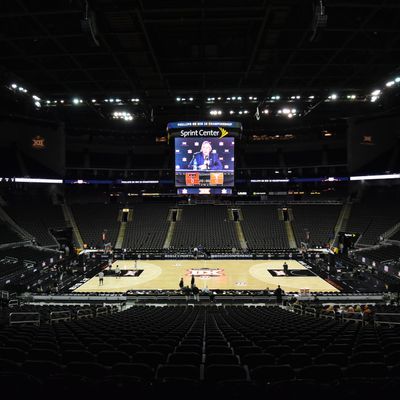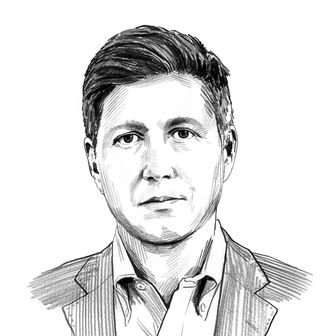
To state the obvious, COVID-19 has been as much of a disaster for sports as it has been for the rest of the world. Every professional sports league has been jolted to its very core, with the lack of paying customers leading to an industry-wide depression and, in the wake of lower-than-expected television ratings, existential questions about the short-and-long term viability of billion-dollar business models. Revenues are way down, which means player salaries will be way down, which almost always leads to some sort of labor-management doomsday scenario. It’s going to get harder before it gets easier, and industry analysts estimate that we may be well into the back end of the next decade before sports revenues return to their 2019 levels, if then. Times are tough all over.
But I’m not sure the pandemic has caused any sport more damage and strife than it has college basketball.
Back in mid-March, when Rudy Gobert tested positive for COVID-19 and shut down the NBA, it was clear that all sports were in for some pain. But the timing was more favorable to some leagues than others. The NFL, for example, had just finished its Super Bowl and wouldn’t be playing any games for nearly six months. The NBA and NHL were almost done with their regular seasons and only needed to figure out how to stage the playoffs. Major League Baseball was just about to get going, but was able to hit pause long enough to cobble together a 60-game season and crown a champion. None of this has gone down the way these leagues would have hoped, and the NFL still has to figure out how to make it through the nightmare of the next two months to reach the Super Bowl. But on the whole, they’ve been able to muddle through.
For college basketball, though, the coronavirus shutdown arrived at precisely the wrong time. The week everything escalated — when Tom Hanks announced he had COVID-19 and Trump banned travel — landed just before the NCAA Men’s Basketball Tournament, that thing with the brackets you used to fill out every March in the office, back when there were offices. The NCAA Tournament is the signature event of college sports, and a massive, massive moneymaker: CBS signed an eight-year, $8.8 billion deal to broadcast the it back in 2016, and that figure alone finances many athletic programs, outside of just men’s basketball, across the country. You could make an argument that the four-month college basketball season itself exists solely to build toward the event. The tournament is college basketball.
Not this year, though. In the span of roughly four days, hopes for a 2020 tournament went up in smoke. And just like that, the season was over. With no union (and, according to the NCAA, no actual labor force) to negotiate with, following the lead of the NBA and NHL wouldn’t work. There was no postponement possible, only cancellation. And without the tournament, it was almost as if no season had happened at all. The whole thing was a bust.
The hope back then (remember back then?) was that the virus would be under control by the time the next season reconvened in November. (Heck, the economy was supposed to be “really rocking again” by July!) Instead, as college basketball attempts to start its 2020-21 season next week, the pandemic is rampaging uncontrolled across the entire country. Arguably the two scariest, most difficult moments of the pandemic in the United States have taken place first when college basketball was trying to end one season, and then when it was trying to start another one. The sport can’t catch a break.
College basketball had all sorts of problems before the pandemic, of course. As we wrote back in January, the sport has been at an existential crossroads, with future NBA superstars skipping college all together (or just playing overseas, like possible No. 1 NBA draft pick LaMelo Ball) and television ratings falling considerably. Meanwhile, the NCAA itself is looking weaker in the face of calls for paying players and other significant reforms, and with some coaches actively mocking the NCAA’s attempts at rule enforcement. The NBA is encouraging players to join their G League rather than play college hoops for free, depriving the sport of vital brand names. With NCAA basketball’s financial structure looking increasingly unsustainable, the sport was beginning to look like a bit of a relic. And that was before a pandemic wiped out its signature event, then messed with its attempts to begin anew.
Opening Night, meant to happen on November 25, still feels very much up in the air. Several programs have suspended all activities in the wake of team-wide outbreaks, a problem that will become more pronounced in a sport that, famously, is played in every corner of the country. (There are 357 Division I programs, located in 49 of the 50 states; sorry, Alaska). Most teams’ schedules are tentative and ever-shifting; one school, Illinois State, was supposed to be in Lincoln, Nebraska, on Wednesday and now will be in Columbus, Ohio, just seven days before tip-off. The Big Ten, the biggest and best conference in college basketball, somehow still hasn’t announced its schedule. And this being college athletics, every college and conference has different testing and tracing protocols, with no universal overarching body for guidance and uniformity. The most effective organizing structure in college basketball right now, hilariously, seems to be the Mohegan Sun casino in Connecticut, which will host 45 games over 11 days in a semi-bubble environment after purchasing nearly 5,000 COVID-19 tests to make sure games can happen.
The NCAA is doing what it can to preserve its precious tournament, announcing Monday morning that the event, still scheduled for March–April 2021, will take place in one city, Indianapolis, the same one hosting the Final Four. But college basketball has to make it that far first — or even make it to Opening Night. It is also worth noting that, even though college basketball is played indoors, some schools and conferences will still be allowing fans to attend their games. (I got my season-ticket renewal notice for the University of Georgia men’s and women’s basketball teams in the mail just the other day.) Most schools, to be clear, aren’t allowing fans in. But that any are speaks to just how desperate the situation has become.
The sport has taken body blow after body blow for many years, and it’s difficult to see how it could possibly survive losing its tournament in two consecutive years. The goal should be to preserve the tournament, however possible; the sport cannot afford to lose two consecutive billion-dollar paydays. There is no other option.
Look, I love college basketball. I’m heartbroken over my favorite team’s fate: My beloved Illinois Fighting Illini were going to reach their first tournament since 2013 last year, before it was canceled, and they’re slated to be even better — a top-ten team — this year. My life, and the lives of many others, would be considerably lessened without the sport. In many ways, it is the most unifying one the country has: It’s beloved from Queens to Los Angeles to Iowa City, and in Lexington, Kentucky, to Spokane, Washington, and Auburn, Alabama. And the tournament is one of the few sporting events every office in the country plays along with. But this is the most difficult test the sport has ever faced, and I’m not sure if anyone’s really in charge — or what their plan would be if someone were. I hope college basketball makes it. But I worry. I absolutely worry.






























